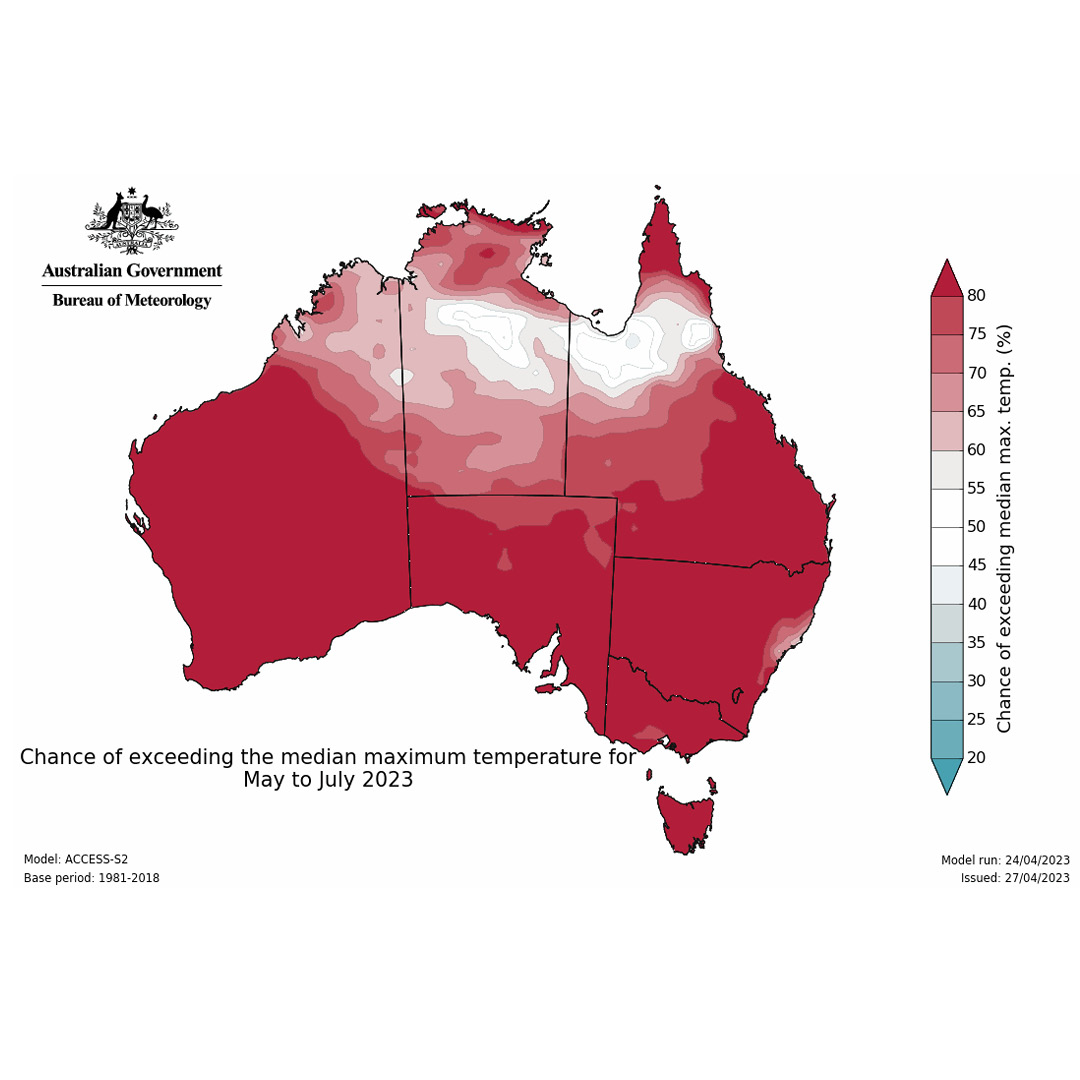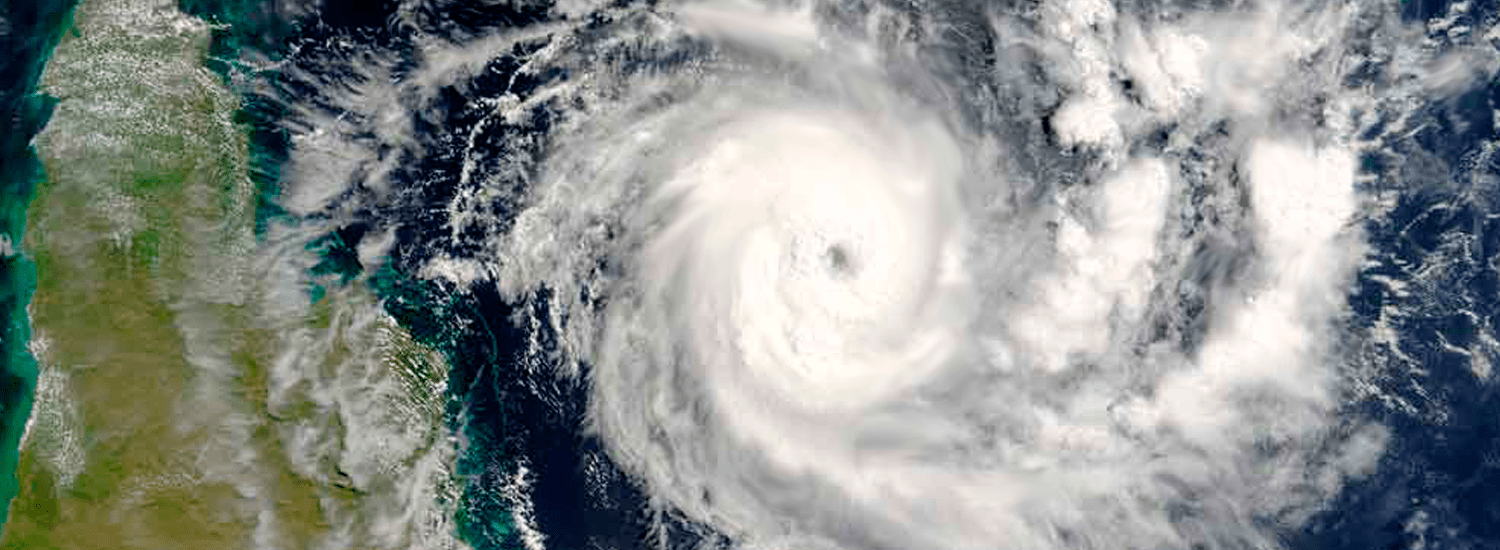A dry and warm winter lies ahead – so what do you need to prepare?
- The BOM long-range forecast predicts higher-than-average temperatures and lower-than-average rainfall this winter for much of Australia
- The possibility of El Niño and a positive Indian Ocean Dipole loom for winter
- By taking steps now, you can prepare your home and business for the risks a warmer, drier winter may bring.
After years of cooler and wetter conditions across Australia, the latest data from the Bureau of Meteorology (BOM) suggests that La Niña is now easing, and a shift towards an El Niño event is possible later this year.
So, what exactly do the next few months have in store? Here’s what you need know to help prepare yourself, your business, and your customers for the change in weather.
What’s the weather forecast for Australia this winter?
According to the latest climate outlooks from BOM, the coming months could be among the driest and warmest on record for this time of year. Here’s what you need to know:
- From May to July, warmer than average days are forecast, with above-average maximum temperatures very likely (above 80 per cent chance) for the southern two-thirds of Australia
- For most of inland northern and central Australia, the chances of above-average temperatures are also likely (60 to 80 per cent chance)1
- Most of the country is at least twice as likely to receive unusually low rainfall during the May to July period, amongst the driest 20 per cent of records for this time of the year
- It’s very likely (60 to 80 per cent chance) that most of Australia will see less rainfall than usual, excluding western Tasmania, coastal regions in Victoria and southern New South Wales, and north tropical regions of Queensland
- Other exceptions include the eastern coast of Cape York Peninsula, where there is a 60 to 70 per cent chance of above-median rainfall, and in areas of northern Queensland and southern Tasmania, where chances of above or below-median rainfall are close to equal.2 However, tropical northern Australia usually has very low rainfall totals, and only a small amount of rainfall is needed to exceed the median.

Why is Australia due to see unusually dry weather and higher temperatures?
Long-range forecasts are predicting that a neutral El Niño–Southern Oscillation (ENSO) will prevail throughout autumn, with a trend towards the development of an El Niño during winter 2023.3
Additionally, the Indian Ocean Dipole (IOD) is forecast to shift from neutral to positive in June, meaning an increased chance of below-average rainfall for much of central and south-eastern Australia.4
Of course, lower-than-average rainfall combined with higher-than-average temperatures will result in drier conditions, which could increase the likelihood of bushfires occurring – particularly later in the year.
What is an El Niño event?
El Niño, is known as the warm phase of the ENSO climate system, and is the opposite end of the cycle to La Niña which we have been experiencing over the past few years.
In an El Niño event, sea surface temperatures surrounding Australia are typically cooler than usual, while the waters off South America become warmer.5 For Australia, the cooler water temperatures reduce the amount of evaporation, decreasing the chance of rain, and increasing the chance of severe weather events such as bushfires, particularly in the summer. During winter and spring, the decrease in cloud cover can also result in lower than average temperatures at night, increasing the risk of frost in some areas.6
What does a positive Indian Ocean Dipole mean for Australia?
The IOD is a natural climate pattern which can influence rainfall patterns, including in Australia, through the difference in sea surface temperatures between the Arabian Sea and the eastern Indian Ocean south of Indonesia.7
In recent years, we’ve seen the shift from a negative IOD to neutral. During a positive IOD event, sea surface temperatures will be cooler than usual near Australia and warmer near Africa. Similar to an El Niño event, this means less moisture in the air and drier conditions for Australia.
Taking precautionary steps before an event occurs
It’s important to regularly take steps to protect our homes, families, businesses and assets – and by identifying risks and working to reduce them, we can decrease the likelihood of damage and loss during extreme weather events.
How can I help my customers protect their homes and businesses?
For brokers, long-range weather insights provide a strong reason to reconnect with customers and help them prepare for what lies ahead.
By helping ensure clients have the right policies and procedures in place, the risks can be lessened – and they can feel comfort in knowing that if an event does occur, their broker will be there to help guide them through the claims process.
Below are some of the tips we recommend sharing with your customers to help them mitigate their risk.
How can businesses help protect against dry weather threats?
Preparation is key in reducing the risks associated with extreme weather events. Here are seven practical steps to take over the coming months to help protect your business.
- Safely clear roofs and guttering of any natural debris and ensure any gaps in the roofs are sealed. Consider hiring a professional if you’re not confident about being on a roof
- Cut back any branches within 10 metres of the property, and keep any grass cut to below 10cm
- Ensure any combustible materials are kept away from the building, in flameproof containers
- If the premises doesn’t already have them, consider installing fireproof window shutters, non-combustible window frames and doors, and toughened glass. These additions could keep fire at bay for a little longer
- Review your insurance cover – including contents, motor and building – and ensure it’s up to date and consistent with today’s values. Remember to consider all machinery, vehicles, outbuildings, fences and stock. Underinsurance was a major issue arising from recent catastrophic weather events,8 so it’s important to review this regularly
- Create a business continuity plan. This will help you identify business risks and set out how you’ll continue to operate should something go wrong
- Create a bushfire readiness plan, detailing what you’ll do and when in the event of a bushfire. Remember, keep it somewhere safe.
How can homes be protected from dry weather threats?
As with preparing your business for the threat of bushfires, it’s also wise to perform routine maintenance around your home to help protect yourself, your family, and your belongings.
- Winter is the ideal time to do some preventative maintenance around the home. For example, make sure roofs, gutters and chimneys are clear of natural debris – which will dry out more quickly with reduced rainfall and higher-than-average temperatures – and cut back any low-hanging branches within 10 metres of your home
- Safely check your roof for any gaps that may need to be sealed – falling embers can enter through small gaps. If you’re not confident being on your roof, consider hiring a professional
- Keep grass cut short – under 10cm
- Check around the home for any flammable materials – including gas canisters and wooden furniture – and move them to a more secure location. If possible, use flameproof containers for storage
- Make an inventory of your contents to ensure you have an up-to-date record of your possessions
- Review your home and contents insurance to ensure your possessions are covered and your home is covered to the rebuild cost of today – not the price you paid for it, or the money that’s outstanding on your home loan
- Make a bushfire readiness plan, detailing what you’ll do and when in the event of a bushfire. It’s better to be prepared!

Keep up to date with weather conditions
While planning ahead is vital, it’s also important to keep up to date with weather conditions and severe weather warnings in your area. By downloading the BOM app onto your smartphone or tablet, and allowing notifications – you should receive severe weather alerts for your area.
State and territory emergency services across Australia also have a range useful tools and resources to help you plan ahead and track severe weather events, such as fires.
- Victoria State Emergency Service
- New South Wales State Emergency Service
- South Australia State Emergency Service
- Tasmania State Emergency Service
- Western Australia Department of Fire & Emergency Services
- Queensland Government’s get ready Queensland resource
- Northern Territory Government’s preparation hub
If you would like to talk about your insurance needs, reach out to your broker, or contact our team on 133 723 or fill in our online enquiry form today.
1 http://www.bom.gov.au/climate/ahead/outlooks/
2 http://www.bom.gov.au/climate/ahead/outlooks/
3 http://www.bom.gov.au/climate/ahead/outlooks/
4 http://www.bom.gov.au/climate/ahead/outlooks/
5 http://www.bom.gov.au/climate/glossary/elnino.shtml
6 http://www.bom.gov.au/climate/updates/articles/a008-el-nino-and-australia.shtml
7 http://www.bom.gov.au/climate/about/australian-climate-influences.shtml?bookmark=iod
8 https://insurancecouncil.com.au/wp-content/uploads/2021/09/ICA008_CatastropheReport_6.5_FA1_online.pdf










